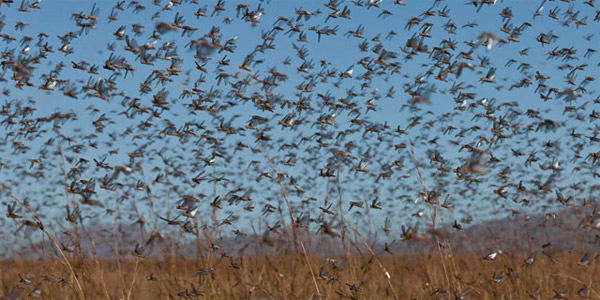More than 60 percent of Madagascar is suffering from a massive locust infestation that is threatening crops and livestock, potentially increasing risks to native wildlife and forests from hungry farmers, warns the U.N. Food and Agriculture Organization (FAO).
According to a report issued Monday, the locust plague is especially severe in the central and southern regions of the island nation. The crisis has worsened already difficult conditions created by cyclone “Haruna” which hit Madagascar in February 2013.
“A locust plague is threatening the livelihoods of 13 million people in Madagascar, nine million of whom earn a living from agriculture,” said the FAO on its web site. “Locust infestations, if untreated, could wipe out food crops and livestock grazing lands – and with it a family’s ability to provide for itself.”

Locusts in Madagascar. Courtesy of FAO.
Rural populations in Madagascar are especially dependent on agriculture for their subsistence. Crop failure could push farmers into forest area and increase the risk of wildlife poaching in some regions.
FAO says it is seeking $22 million by June to address the crisis.

Rainbow Milkweed Locust (Phymateus saxosus) in Madagascar. Photo by Rhett A. Butler.
Related articles













